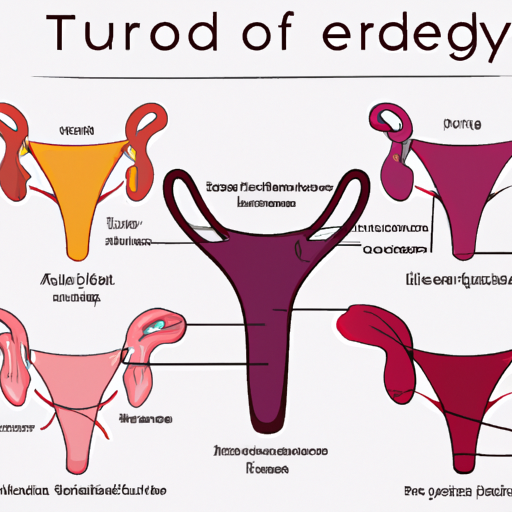Uterine fibroids are a common health issue that affects many women worldwide. These non-cancerous growths in the uterus can lead to a variety of symptoms, ranging from heavy and painful periods to fertility problems. Understanding the symptoms, causes, and diagnosis of uterine fibroids is crucial for early detection and effective treatment. In this article, we will delve into the world of uterine fibroids, exploring the various treatment options available, both surgical and non-surgical. Additionally, we will discuss coping strategies, lifestyle changes, and support systems that can help women navigate life with uterine fibroids. Whether you are experiencing symptoms or simply curious about this condition, this article aims to provide comprehensive information and guidance on uterine fibroids.
1. "Understanding Uterine Fibroids: Symptoms, Causes, and Diagnosis"
Uterine fibroids, also known as leiomyomas, are non-cancerous growths that develop in the uterus. Although these growths are common, many women may not be aware of their presence as they often do not cause any noticeable symptoms. However, in some cases, uterine fibroids can lead to uncomfortable symptoms and complications that require medical attention.
Symptoms of uterine fibroids can vary depending on their size, number, and location within the uterus. Some women may experience heavy or prolonged menstrual periods, pelvic pain or pressure, frequent urination, difficulty emptying the bladder, constipation, and lower back pain. In some cases, fibroids can also lead to infertility or complications during pregnancy.
The exact cause of uterine fibroids is still unknown. However, it is believed that various factors contribute to their development. Hormonal imbalances, particularly high levels of estrogen and progesterone, are thought to play a significant role in their growth. Genetic predisposition, obesity, and certain other medical conditions may also increase the risk of developing fibroids.
Diagnosing uterine fibroids usually involves a combination of medical history, physical examination, and diagnostic tests. During a pelvic examination, a healthcare provider may be able to feel the presence of fibroids or notice any abnormalities in the uterus. To confirm the diagnosis and obtain more detailed information, additional tests such as ultrasound, magnetic resonance imaging (MRI), h
2. "Exploring Treatment Options: Surgical and Non-Surgical Approaches for Uterine Fibroids"
Uterine fibroids are non-cancerous growths that develop in the uterus, affecting many women during their reproductive years. These fibroids can cause a range of symptoms, including heavy menstrual bleeding, pelvic pain, frequent urination, and even infertility. Therefore, it is essential to explore treatment options for managing and alleviating the symptoms associated with uterine fibroids.
1. Non-Surgical Approaches:
When it comes to treating uterine fibroids, non-surgical options are often considered as the first line of treatment. These approaches are generally recommended for women who experience mild to moderate symptoms or those who wish to preserve their fertility. Some of the non-surgical treatment options include:
a) Watchful Waiting: In cases where fibroids are small and not causing any noticeable symptoms, doctors may recommend a "watch and wait" approach. Regular monitoring through ultrasound or pelvic examinations is necessary to ensure the fibroids do not grow or cause any complications.
b) Medications: Certain medications can help manage the symptoms associated with uterine fibroids. Hormonal birth control methods, such as oral contraceptives, can help regulate menstrual bleeding and reduce pain. Additionally, gonadotropin-releasing hormone (GnRH) agonists can be prescribed to shrink the fibroids temporarily.
c) Uterine Fibroid Embolization (UFE): This minimally invasive procedure involves blocking the blood vessels that supply the fib
3. "Living with Uterine Fibroids: Coping Strategies, Lifestyle Changes, and Support"
Living with uterine fibroids can be challenging, as the symptoms can greatly impact a woman’s quality of life. However, there are coping strategies, lifestyle changes, and support options available to help manage the condition and minimize its effects.
One of the first steps in coping with uterine fibroids is to educate oneself about the condition. Understanding the causes, symptoms, and available treatment options can empower women to make informed decisions about their health. This knowledge can also help in finding effective coping strategies.
Maintaining a healthy lifestyle is crucial for managing uterine fibroids. Regular exercise, such as walking or swimming, can help reduce symptoms and improve overall well-being. Engaging in stress-reducing activities like yoga, meditation, or deep breathing exercises can also be beneficial. Stress management techniques not only alleviate symptoms but also promote emotional well-being.
Dietary modifications can play a significant role in managing uterine fibroids. Research suggests that a diet rich in fruits, vegetables, whole grains, and lean proteins may help reduce the risk of fibroid development and minimize symptoms. On the other hand, it is advisable to limit the consumption of processed foods, refined sugars, and caffeine, as they can exacerbate symptoms.
Seeking support from friends, family, and healthcare professionals is essential when living with uterine fibroids. Sharing concerns, fears, and experiences with loved ones can provide emotional support and reduce feelings of isolation. Additionally, joining
